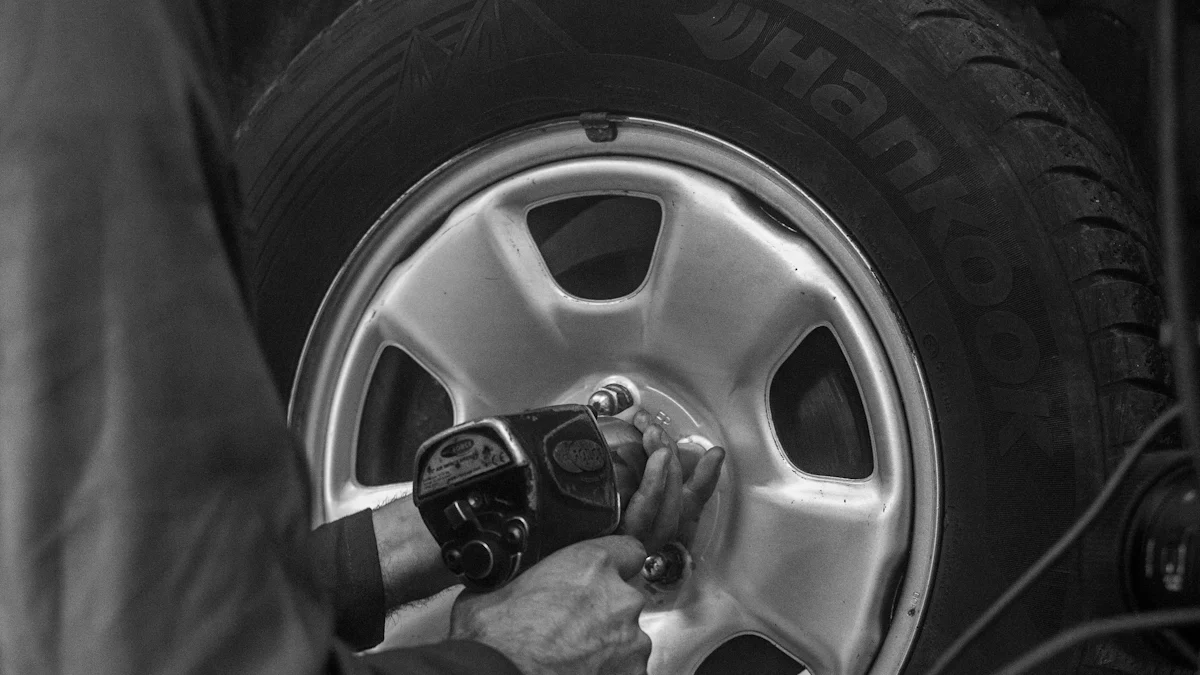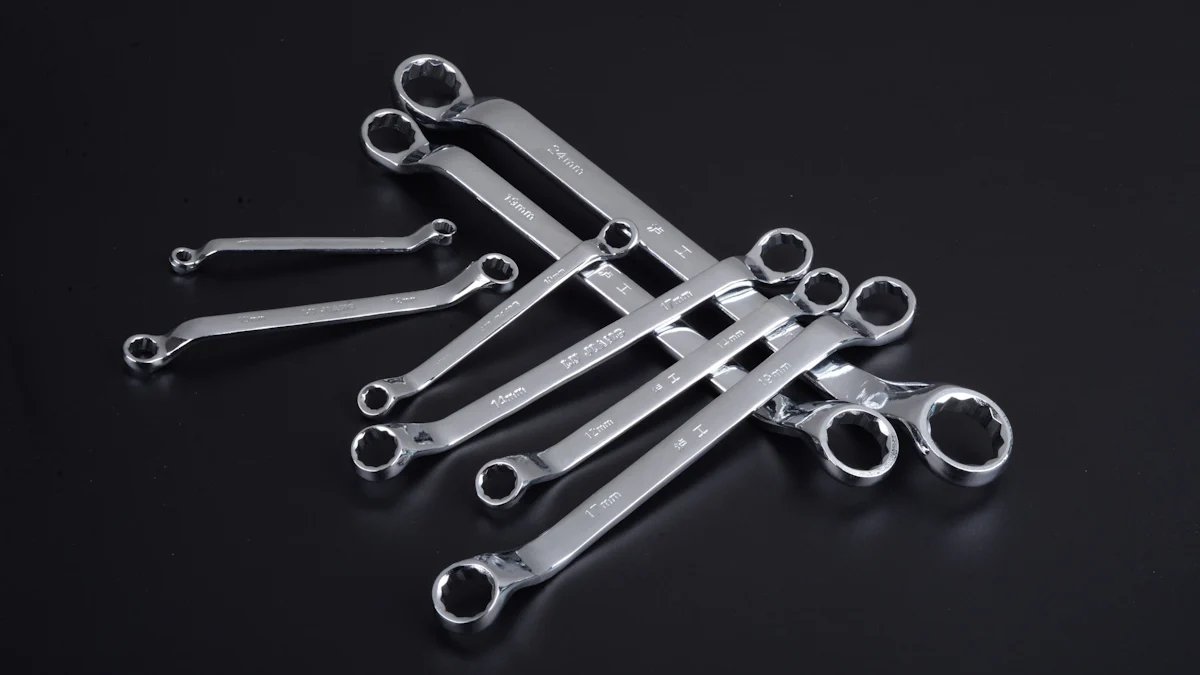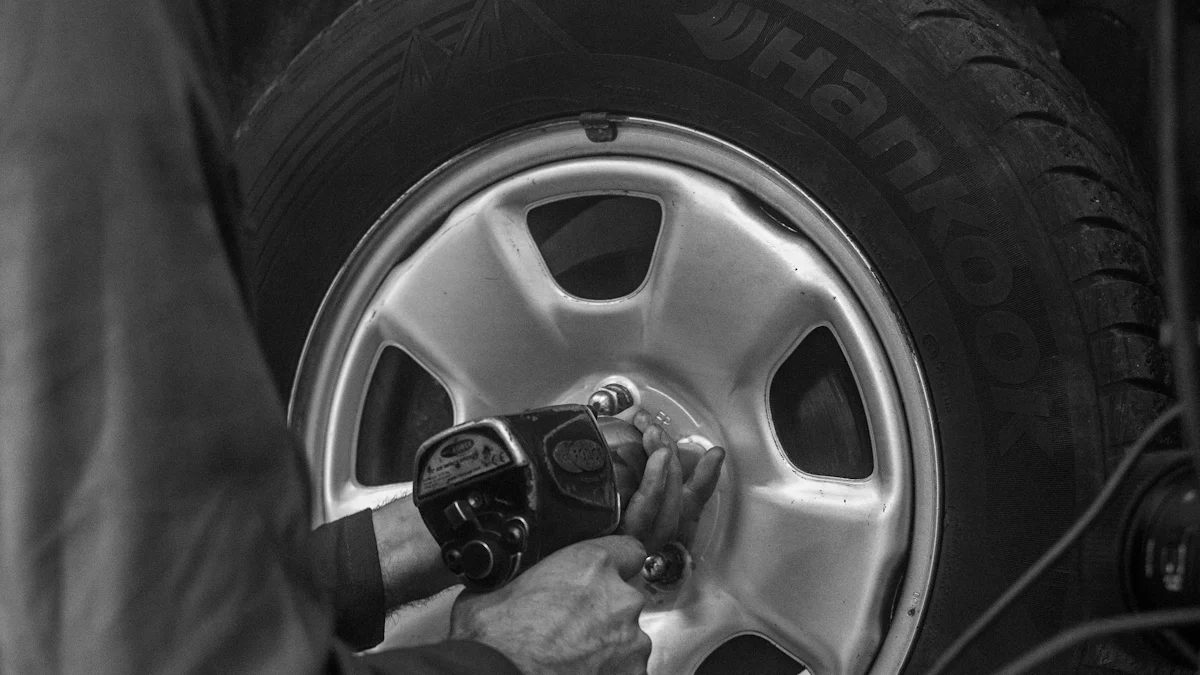
Vehicle maintenance plays a vital role in ensuring safety on the road. Tools are essential for maintaining vehicle health and preventing accidents. A tire spanner stands out as a crucial tool for tire maintenance. Tire-related issues cause about 33,000 accidents annually in the U.S. Over 50% of roadside breakdowns result from tire problems. Proper tools can significantly reduce these incidents. A tire spanner helps drivers manage tire health effectively, reducing the risk of accidents and breakdowns.
Understanding the Tire Spanner

Definition and Purpose
What is a Tire Spanner?
A tire spanner, also known as a lug wrench or tire iron, is a tool used to loosen and tighten lug nuts on automobile wheels. This tool provides a mechanical advantage, making it easier to apply the necessary torque to turn the lug nuts. Mechanics and drivers use tire spanners to ensure the proper fastening of wheels to vehicles.
Primary Functions of a Tire Spanner
The primary function of a tire spanner is to remove and tighten lug nuts on a car’s wheels. This ensures that the wheels remain securely attached to the vehicle. Proper use of a tire spanner helps in maintaining tire health and preventing accidents caused by loose or improperly tightened lug nuts.
Types of Tire Spanners
L-Shaped Spanners
L-shaped spanners feature a simple design with a single arm extending from the handle. This type of spanner provides leverage for loosening and tightening lug nuts. The compact size makes it easy to store in a vehicle’s trunk.
Cross-Shaped Spanners
Cross-shaped spanners, also known as four-way spanners, have a cross design with four different socket sizes. This design offers versatility and better leverage compared to L-shaped spanners. Cross-shaped spanners are popular among mechanics for their efficiency and ease of use.
Telescopic Spanners
Telescopic spanners have an adjustable length, allowing users to extend the handle for increased leverage. This feature makes it easier to loosen stubborn lug nuts. Telescopic spanners are convenient for roadside emergencies due to their compact storage size and extended reach.
Materials and Build Quality
Common Materials Used
Manufacturers commonly use materials like steel and chrome vanadium for tire spanners. These materials provide durability and strength, ensuring the tool can withstand high torque levels. Some spanners feature rubberized grips for better handling and comfort.
Importance of Build Quality
High-quality build materials ensure the longevity and reliability of a tire spanner. A well-built spanner resists wear and tear, providing consistent performance over time. Investing in a durable tire spanner enhances safety and efficiency during tire maintenance tasks.
How to Use a Tire Spanner

Step-by-Step Guide
Preparing Your Vehicle
Before using a tire spanner, ensure the vehicle is on a flat and stable surface. Engage the parking brake to prevent movement. Place wheel chocks behind the wheels to add extra stability. Gather all necessary tools, including the tire spanner, jack, and spare tire.
Loosening the Nuts
Position the tire spanner on one of the lug nuts. Apply steady pressure to turn the spanner counterclockwise. Loosen each lug nut slightly but do not remove them completely. This step ensures the nuts are easier to remove once the vehicle is lifted.
Removing the Tire
Use the jack to lift the vehicle off the ground. Follow the manufacturer’s instructions for safe jacking. Once the vehicle is lifted, use the tire spanner to fully remove the loosened lug nuts. Carefully take off the tire and set it aside.
Tightening the Nuts
Place the new or repaired tire onto the wheel hub. Hand-tighten the lug nuts to hold the tire in place. Lower the vehicle back to the ground using the jack. Use the tire spanner to tighten the lug nuts in a star pattern. This method ensures even tightening and proper fit.
Safety Tips
Ensuring Proper Fit
Always check that the tire spanner fits the lug nuts correctly. A loose fit can cause slipping and potential injury. Ensure the spanner grips the nut securely before applying force.
Avoiding Over-Tightening
Over-tightening lug nuts can damage the threads and make future removal difficult. Use the tire spanner to tighten the nuts until they are snug. Avoid using excessive force. For precise torque, consider using a torque wrench after initial tightening.
“Proper tire maintenance can prevent accidents and breakdowns,” says an expert from Uptake. Advanced analytics can detect tire-related issues like leaks and pressure drops earlier than conventional systems.
Benefits of Owning a Tire Spanner
Convenience and Accessibility
Easy to Store
A tire spanner offers great convenience due to its compact size. Most tire spanners can easily fit in the trunk of a car. This ensures that drivers always have the tool on hand when needed. The small size does not compromise the tool’s effectiveness. Many drivers appreciate the ease of storing a tire spanner without taking up much space.
Quick Access in Emergencies
Having a tire spanner readily available can make a significant difference during emergencies. Roadside tire issues can occur unexpectedly. A tire spanner allows drivers to address these problems quickly. Immediate access to this tool can prevent long waits for roadside assistance. Quick action can also enhance safety by reducing the time spent on the side of the road.
Cost-Effectiveness
Saving on Professional Services
Owning a tire spanner can save money on professional tire services. Many drivers face high costs for simple tire changes or rotations. A tire spanner enables drivers to perform these tasks themselves. This reduces the need for costly visits to a mechanic. Over time, the savings from using a tire spanner can be substantial.
Long-Term Investment
Investing in a high-quality tire spanner provides long-term benefits. Durable materials ensure that the tool lasts for many years. A well-built tire spanner resists wear and tear, maintaining its effectiveness. This makes it a valuable addition to any vehicle toolkit. The initial cost of a tire spanner pays off through years of reliable use.
Enhanced Safety
Immediate Response to Flat Tires
A tire spanner allows for immediate response to flat tires. Delays in addressing flat tires can lead to dangerous situations. Quick action with a tire spanner can prevent accidents and further damage to the vehicle. Drivers can replace or repair tires on the spot, ensuring continued safe travel.
Ensuring Proper Tire Maintenance
Proper tire maintenance is crucial for vehicle safety. A tire spanner helps drivers maintain their tires by ensuring lug nuts are properly tightened. Loose or improperly tightened lug nuts can cause serious accidents. Regular use of a tire spanner ensures that tires remain securely attached to the vehicle. This enhances overall vehicle safety and performance.
“I purchased this for my car in case of a flat tire. I am tired of fighting a manual lug wrench, too much work,” says a customer from Sharper Image.
“Helping my daughter be self-reliant in changing a tire by herself and to simply rotate the tires. Yes, you can pay people to do this but that’s not the point,” shares a customer from lugripper.com.
A tire spanner plays a critical role in maintaining vehicle safety. Every driver should include a tire spanner in their vehicle toolkit. This tool ensures that lug nuts remain secure, preventing accidents and breakdowns. Proper use of a tire spanner can save money on professional services and provide immediate response during emergencies. Investing in a high-quality tire spanner enhances long-term vehicle preparedness. Regular maintenance with a tire spanner ensures safe and efficient travel.
See Also
Discovering the Range of Socks for Males and Females
Top Tips for Warm Winter with Soft Comfort Socks
